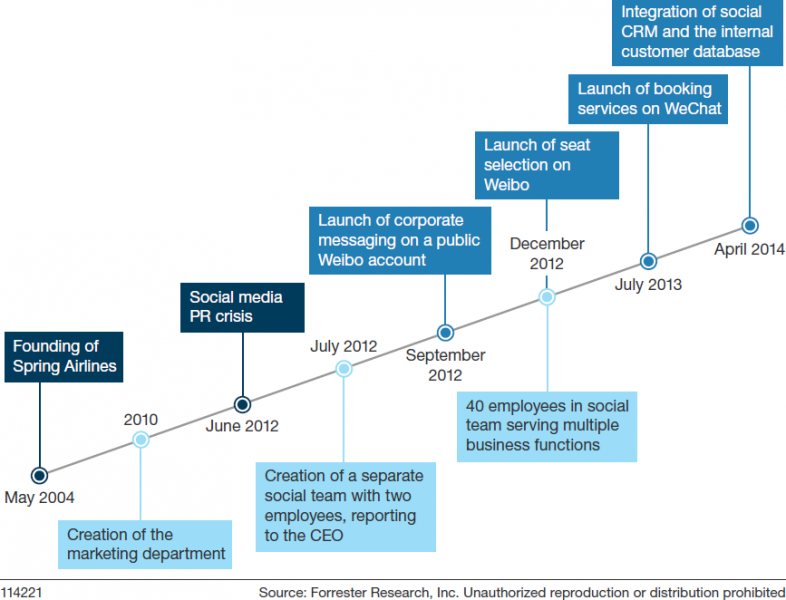Chinese Businesses Embrace Social Intelligence
Chinese people are hypersocial in their lifestyle and daily work, and Forrester forecasts that 681 million of them will be using social media by 2019. Online Chinese are actively engaging with brands and companies on social media: 29 brands or companies on Sina Weibo and 32 brands or companies on WeChat on average. Chinese businesses have realized the importance of social for customer life-cycle management. While they’ve started using social to increase brand awareness — such as broadcasting on Sina Weibo — they can’t recognize potential customers in this one-way communication. They use public WeChat accounts to shorten response times to client service requests — but they can’t predict these requests in advance. To address these challenges, businesses in China are starting to use enterprise-class analytics tools for Chinese social platforms.
As a pioneer of social listening in China’s aviation industry, Spring Airlines successfully leveraged social intelligence tools to differentiate its products and services, and my new report traces this journey. It began with listening to the Sina Weibo social media platform for PR and brand tracking purposes and then went further, using social intelligence tools to supports marketing, sales, and customer service. For instance, the airline provides social booking services on WeChat to enable customer-to-business product innovation. When Spring discovers that more than 200 passengers have similar travel plans, the marketing team creates customized vacation packages — including flights, hotel, and local transportation — based on those customers’ social profiles and past travel experiences. Social bookings helped the company increase passenger numbers by as much as 30% for new flights from Shanghai to Chiang Mai, Thailand and Da Nang, Vietnam.
To build up this solid social intelligence footprint, Spring Airlines created a dedicated social operations team. Spring Airlines’ social operations team started with just two members to operate the company’s public Sina Weibo account on Sina Weibo and gradually extended its responsibilities from crisis identification and brand tracking to providing social data to marketing, product management, and customer service. The customer service team, for one, found that customer satisfaction increased after it implemented the social team’s suggestions. Within six months, the social operations team had grown to 40 employees and was responsible for integrating customer insights from marketing, product management, and customer service (see Figure 1).
Figure 1: Spring Airlines’ Social Journey, 2010 To 2014

Spring Airlines began using social listening to monitor customers’ online behavior for PR and brand tracking and then turned to social intelligence to drive more actionable insights. Customer insights professionals and marketers attempting to build a social intelligence strategy must keep an eye on the WeChat platform, find the right social intelligence partners, and engage with lines of business. If you have any queries about social intelligence patterns in China, please feel free to contact me.